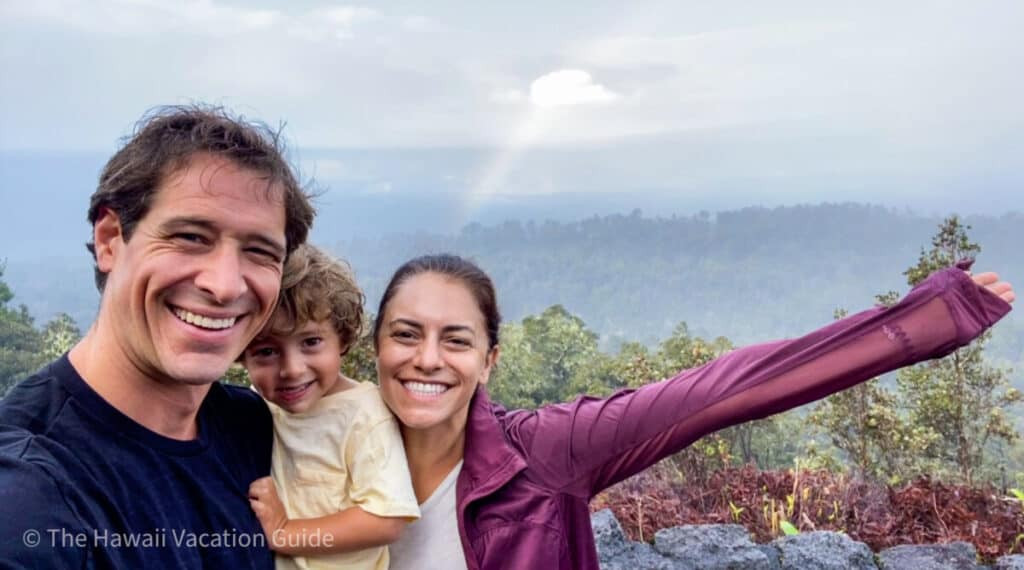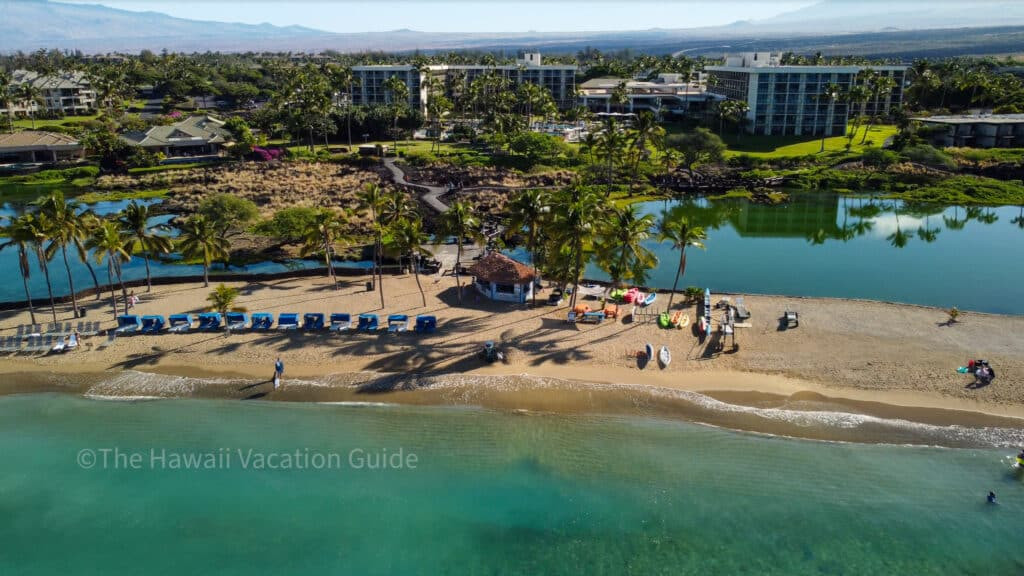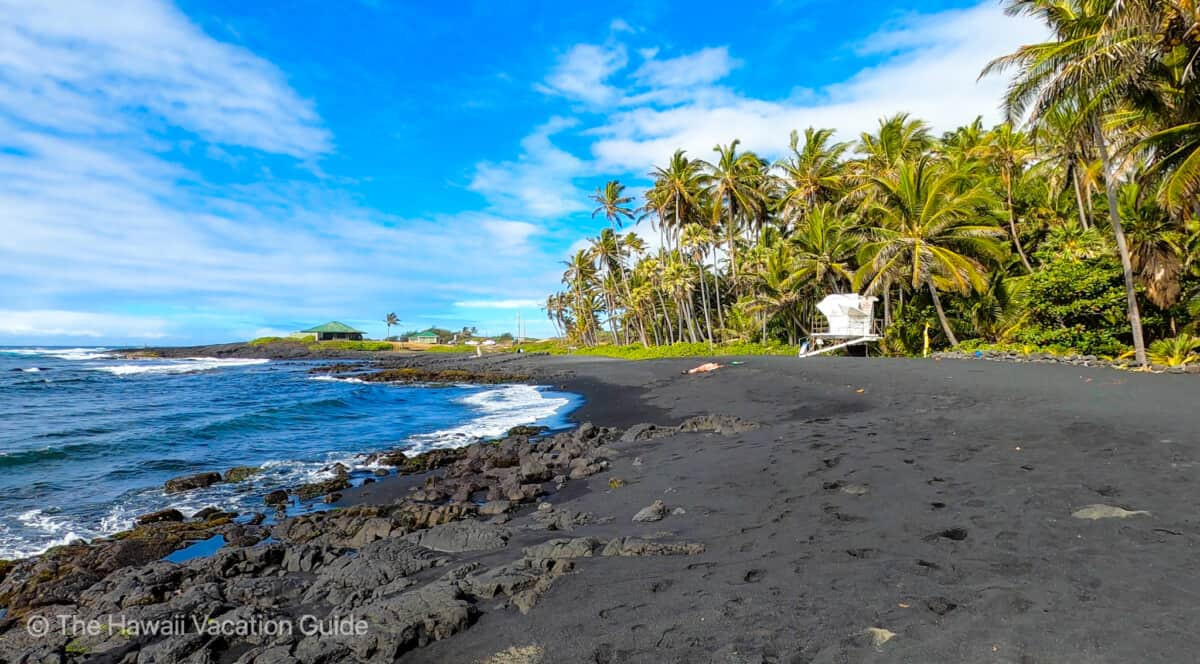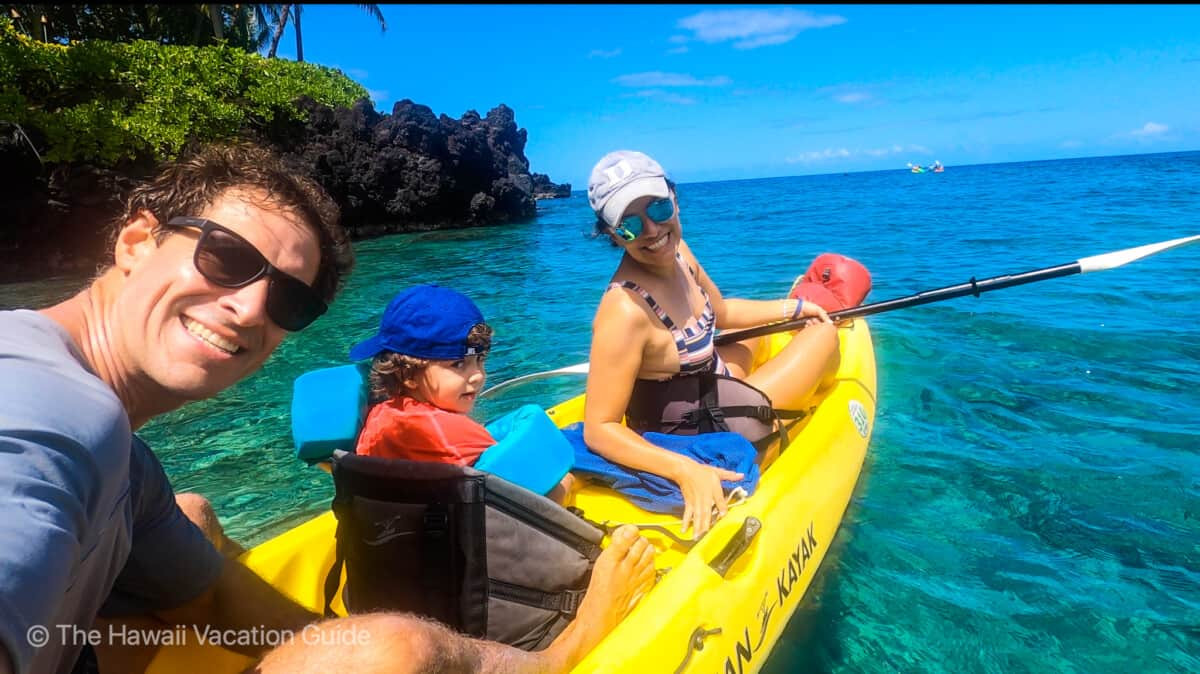Embarking on an unforgettable journey to the Aloha State? The Hawaii Big Island Travel Guide is your compass, pointing you toward the most breathtaking landscapes, thrilling activities, and hidden gems this diverse island has to offer. SIXT.VN is here to ensure your Hawaiian adventure is seamless, providing expert travel solutions that cater to your every need. Discover the best Hawaiian vacation with our comprehensive tips and tricks.
1. Understanding the Big Island: Essential Facts and Geography
Before you set off, it’s beneficial to grasp some key aspects of the Big Island.
1.1. Captivating Facts About the Big Island
- Captain Cook’s Landing: Kealakekua Bay marks where Captain James Cook, the first European to arrive in Hawaii, met his end in 1779.
- Mauna Kea’s Height: Mauna Kea holds the title of the world’s tallest mountain when measured from its base on the ocean floor, surpassing even Mount Everest.
- Island Names: Officially named the Island of Hawaiʻi, it’s often called the Big Island to differentiate it from the state of Hawaii.
1.2. Diverse Geography
The Big Island boasts 63% of Hawaii’s total land, exceeding all other islands combined. Ongoing volcanic activity continues to expand its landmass. According to research from the United States Geological Survey (USGS), in 2020, volcanic activity has added over 500 acres to the island’s southeastern coast, showcasing its dynamic geological nature.
1.2.1. Key Geographical Regions
- Volcanoes: Home to five major volcanoes, the island showcases dynamic geological formations.
- Regions: The Big Island is divided into six distinct regions: Kona, Kohala, Hamakua Coast, Hilo, Puna, and Kau, each offering unique landscapes and experiences.
1.2.2. Leeward vs. Windward
- Leeward Side: Drier climate, ideal for sun-seekers.
- Windward Side: Lush, tropical environment with frequent rainfall.
2. Exploring the Diverse Regions of the Big Island
Each region on the Big Island offers a unique flavor and set of attractions. Let’s delve into what makes each one special.
2.1. Kona: The Sunny Paradise
Kona, situated on the leeward side, is known for its sun-soaked beaches, top-notch snorkeling, sprawling coffee farms, and rich cultural heritage. The Ellison Onizuka Kona International Airport (KOA) is conveniently located here, making it a popular choice for visitors. According to the Hawaii Tourism Authority, Kona welcomes approximately 40% of all visitors to the Big Island, drawn by its favorable weather and diverse attractions.
 Big Island travel guide – Volcanoes House Lodge
Big Island travel guide – Volcanoes House Lodge
2.1.1. Must-Visit Spots in Kona
- Beaches: Enjoy calm, swimmable waters at the best Kona beaches.
- Coffee Farms: Explore the numerous coffee farms nestled in the hills.
- Puʻuhonua o Hōnaunau National Historical Park: Immerse yourself in Hawaiian history and culture.
- Snorkeling: Discover the island’s best snorkeling at Kealakekua Bay.
2.1.2. Enhance Your Kona Experience
- The 21 Best Things to do in Kona (+ tips to know before you go)
- Where to Stay in Kona: the 7 Best Hotels and Vacation Rentals
- Tried & Tested: The 5 Best Manta Ray Night Snorkel (& Dives) in Kona
2.2. Kohala: The Gold Coast
North of Kona, Kohala, also known as the Gold Coast, is famous for its luxurious resorts and stunning beaches like Hapuna Beach, renowned for its white sands and clear blue waters. Inland, discover Waimea’s cowboy charm, the serene town of Hawi, and the picturesque Pololu Valley. According to a 2022 report by the Hawaii Department of Business, Economic Development & Tourism, Kohala’s resorts boast an average occupancy rate of 85%, reflecting its popularity as a luxury destination.
 Big Island Travel Guide A Bay
Big Island Travel Guide A Bay
2.2.1. Activities and Attractions in Kohala
- Beaches: Relax on the pristine sands of Hapuna Beach and other coastal gems.
- Waimea: Experience the culture and charm of this paniolo (cowboy) town.
- Pololu Valley: Hike to breathtaking views of the rugged coastline.
2.2.2. Additional Resources for Kohala
- The 15 Best Things To Do In Waikoloa
- Kona vs Waikoloa: What’s the Best Place to Stay on the Big Island
2.3. Hamakua Coast: The Waterfall Wonderland
Transitioning to the windward side, the Hamakua Coast is celebrated for its dramatic coastline, cascading waterfalls, and lush landscapes. Waipio Valley, the childhood home of King Kamehameha I, adds historical significance to this scenic region. According to the Hawaii Department of Land and Natural Resources, the Hamakua Coast receives an average of 100 inches of rainfall annually, nourishing its vibrant ecosystem.
2.3.1. Highlights of the Hamakua Coast
- Waterfalls: Discover the numerous breathtaking waterfalls along the coast.
- Waipio Valley: Explore the historic and scenic valley.
2.4. Hilo: The Cultural Hub
Hilo, the largest town on the windward side, provides access to Hilo International Airport (ITO) and acts as a gateway to local attractions, including Volcanoes National Park. According to the U.S. Census Bureau, Hilo has a population of approximately 45,000 residents, making it the most populous city on the Big Island and a hub of cultural activity.
2.4.1. Experiencing Hilo
- Downtown Hilo: Explore the unique shops, restaurants, and cultural sites.
- Volcanoes National Park: Take a day trip to witness the power of nature.
2.4.2. Hilo Itineraries and Guides
- 1-Day Hilo Itinerary for Things to Do
- The Best Things to Do in Hilo (+nearby)
2.5. Puna: The Garden of Eden
South of Hilo, the Puna district is known for its fertile lands, abundant farms, and unique attractions such as the Kalapana lava viewing area. According to the University of Hawaii at Hilo, Puna’s volcanic soil is rich in nutrients, supporting a diverse range of agricultural products, including orchids, papayas, and macadamia nuts.
2.5.1. Activities in Puna
- Farms: Visit local farms growing flowers, macadamia nuts, and papayas.
- Kalapana: Witness the dramatic landscapes shaped by volcanic activity.
2.6. Kau: The Quiet South
The southern Kau region offers tranquility and access to Punalu’u Black Sand Beach and Volcanoes National Park. According to the National Park Service, Volcanoes National Park attracts over 1 million visitors annually, with the majority of its area located in the Kau region.
2.6.1. Exploring Kau
- Punalu’u Black Sand Beach: Experience the unique beauty of the black sand.
- Volcanoes National Park: Discover the geological wonders and hiking trails.
3. Planning Your Trip: When to Visit the Big Island
Choosing the right time to visit can enhance your experience.
3.1. Summer vs. Winter in Hawaii
Hawaii has two seasons: summer (kau) from May to October and winter (hooilo) from November to April. Luckily, the Big Island’s weather is generally warm year-round.
3.2. Best Times to Visit
The ideal months to visit are May and October. These shoulder seasons offer fewer crowds, pleasant weather, and lower travel costs. According to data from the Hawaii Tourism Authority, these months see approximately 20% fewer visitors compared to peak seasons like summer and winter holidays.
3.3. Considerations for Winter Travel
While winter brings slightly more rain and cooler temperatures, Kona remains sunny and warm. Be prepared for rougher surf conditions in Kohala.
3.4. Holiday Travel
The Big Island experiences a significant surge in visitors during the holidays, making it a popular destination for those seeking a warm escape.
4. Transportation: Getting to and Around the Big Island
Navigating the Big Island requires careful planning.
4.1. Airports on the Big Island
- Ellison Onizuka Kona International Airport (KOA): Serves most visitors with inter-island, domestic, and international flights.
- Hilo International Airport (ITO): Primarily serves inter-island flights and some west coast domestic routes.
4.2. Renting a Car
A car is essential for exploring the Big Island. Consider using Discount Hawaii Rental Car for cost-effective options. According to a 2023 survey by Budget Travel, renting a car in Hawaii can save travelers up to 30% compared to booking directly with major rental companies.
4.3. Driving Around the Island
The Big Island can be circumnavigated in a day via the northern, southern, or saddle road routes. For instance, driving from Kona to Hilo via the northern route takes about 2 hours, while the saddle road shortens it to 1.5 hours.
4.4. Road Conditions
Most roads are well-paved and navigable with any car. While 4-wheel drive is preferred for certain areas, most attractions are accessible with regular vehicles.
4.5. Guided Tours
If you prefer not to drive, consider the Big Island Circle Tour for a comprehensive guided experience.
5. Accommodation: Where to Stay on the Big Island
The Big Island offers diverse lodging options, from luxurious resorts to quaint vacation rentals.
5.1. Hotels vs. Vacation Rentals
- Hotels: Ideal for a traditional resort experience with pools, beaches, and restaurants.
- Vacation Rentals: Perfect for those seeking kitchen access, more space, and cost savings.
5.2. Popular Accommodation Areas
- Kona and Kohala Coast: Known for dry weather and popular resorts.
- Hilo: Offers unique lodging options on the lush windward side.
5.3. Camping on the Big Island
For adventurous travelers, camping is a great option. Volcanoes National Park offers excellent camping sites. According to the National Park Service, camping permits in Volcanoes National Park are in high demand, with reservations often required months in advance.
5.4. Let SIXT.VN Find The Best Accommodations For You
SIXT.VN simplifies finding the ideal place to stay, offering a curated selection of hotels and vacation rentals that meet various needs and budgets, ensuring a comfortable and memorable stay on the Big Island.
Related Articles:
- Where to Stay Guide
- Hawaii Hotel vs Airbnb
- Camping on the Big Island
 Big Island travel guide – black sand beach
Big Island travel guide – black sand beach
6. Trip Duration: How Many Days to Stay
To fully experience the Big Island, plan to stay at least a week. This duration allows you to explore key attractions and enjoy relaxation time. The average visitor spends eight days on the island.
6.1. Enhance Your Planning
- How many days you should spend on the Big Island
- Hawaii packing list
7. Beaches and Snorkeling: Discovering the Big Island’s Aquatic Treasures
The Big Island boasts numerous beautiful beaches and snorkeling spots.
7.1. Top Beaches
- Hapuna Beach: Known for its white sands and excellent swimming conditions during summer.
- Kikaua Point Park: Ideal for families with a protected cove perfect for swimming and snorkeling.
- Punalu’u Black Sand Beach: Famous for its unique black sand, perfect for sightseeing.
7.2. Best Snorkeling Spots
Kealakekua Bay, accessible by boat tour or kayak trip, offers an unforgettable snorkeling experience. According to the Hawaii Division of Aquatic Resources, Kealakekua Bay is a Marine Life Conservation District, home to over 600 species of fish and marine life.
7.3. Resources for Beach Lovers
- List of our favorite Big Island beaches
- Favorite snorkeling spots on the island
7.4. Beach Safety
Always prioritize beach safety by swimming at beaches with lifeguards and heeding safety flags. For more information, visit hioceansafety.com.
 Big Island travel guide – Kayak to Kealakekua Bay
Big Island travel guide – Kayak to Kealakekua Bay
8. Must-Do Activities on the Big Island
The Big Island is rich in natural beauty, cultural sites, and adventurous activities.
8.1. Favorite Experiences
Prioritize activities based on your interests, with options ranging from exploring Volcanoes National Park to stargazing on Mauna Kea.
8.2. Additional Resources
- Full list of things you can do activities on the Big Island
- Five can’t miss experiences on the Big Island
- Ton more farm tours
- Whale watching in the winter
- 12 things to do in Kona with kids
8.3. Streamline Your Trip
SIXT.VN offers curated recommendations and booking services for these top activities, making it easier to plan your itinerary and ensure a memorable experience.
9. Guided Tours and Shore Excursions
Consider booking guided tours to enhance your experience and support local businesses.
9.1. Tour Benefits
Guided tours provide valuable insights from knowledgeable locals, whether it’s the history during a canoe tour or marine life education during a snorkeling trip.
9.2. Cruise Ship Visitors
If you’re visiting on a cruise ship, check out the best Big Island shore excursions and our Cruise Travel Guide.
9.3. How SIXT.VN Can Help
SIXT.VN provides detailed information and booking services for a range of tours, helping you make the most of your visit by connecting you with top-rated local guides and experiences.
10. Big Island Itineraries
Utilize island itineraries to streamline your planning process and ensure a smooth trip.
10.1. Streamline Your Trip
Our island itineraries help you navigate the planning process and make your trip smooth once you’re on-island. Thousands of customers have loved them, whether they were planning for a trip that was a year away or a trip that was a day away.
10.2. Big Island Itinerary
The step-by-step itinerary takes you to all the best beaches, snorkeling spots, restaurants, and sights. You’ll get six carefully planned excursion days to help you see the can’t miss stops no matter how limited your time is.
10.3. Why Choose SIXT.VN?
SIXT.VN not only provides access to pre-planned itineraries but also offers customized planning services. Our team tailors itineraries to your specific interests and needs, ensuring a personalized and unforgettable Hawaiian vacation.
FAQ: Your Questions About the Big Island Answered
1. What is the best time of year to visit the Big Island?
May and October offer pleasant weather, fewer crowds, and lower travel costs.
2. Do I need to rent a car to get around the Big Island?
Yes, renting a car is highly recommended for exploring all the island has to offer.
3. What are the best beaches on the Big Island?
Hapuna Beach, Kikaua Point Park, and Punalu’u Black Sand Beach are among the best.
4. Where is the best snorkeling on the Big Island?
Kealakekua Bay is renowned for its snorkeling.
5. How many days should I spend on the Big Island?
At least a week is recommended to fully experience the island.
6. What is the leeward side of the Big Island like?
The leeward side, including Kona and Kohala, is drier and known for its sunny weather.
7. What is the windward side of the Big Island like?
The windward side, including Hilo and the Hamakua Coast, is lush and tropical with frequent rainfall.
8. Are there any active volcanoes on the Big Island?
Yes, Kilauea is an active volcano located in Volcanoes National Park.
9. What kind of accommodations are available on the Big Island?
Options range from luxury resorts and hotels to vacation rentals and camping sites.
10. How can SIXT.VN help me plan my trip to the Big Island?
SIXT.VN provides customized travel solutions, including itinerary planning, accommodation booking, activity recommendations, and transportation assistance to ensure a seamless and memorable Hawaiian vacation.
Final Thoughts
With its diverse landscapes and endless activities, the Big Island is an incredible destination. Let SIXT.VN be your guide, providing expert travel solutions to ensure your Hawaiian adventure is seamless and unforgettable. Ready to explore the Big Island? Contact SIXT.VN today and start planning your dream vacation!
Address: 260 Cau Giay, Hanoi, Vietnam
Hotline/Whatsapp: +84 986 244 358
Website: SIXT.VN
Enjoy an amazing trip!



